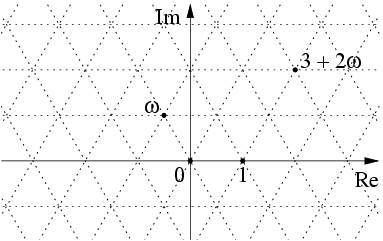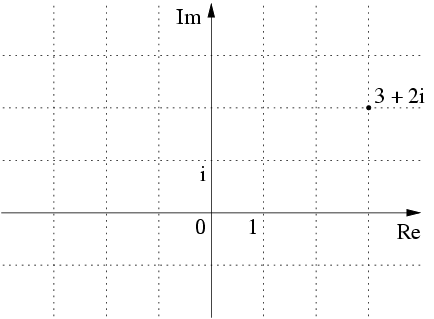Integral Octonions (Part 4)
Posted by John Baez
This mini-series will take a break soon, since I’ll be wandering around China from August 6th to 20th. But before I go, I’d like to say a bit about the 8-dimensional polytope whose vertices are the 240 integral octonions with smallest norm (apart from zero)—or if you prefer, the 240 root vectors of .
This polytope goes by various names. Most people call it the root polytope of . Jonathan Bowers called it the dischiliahectohexacontamyriaheptachiliadiacosioctacontazetton, apparently following the principle that an absurdly complex shape needs an absurdly complicated name. But it was discovered by Thorold Gosset in his 1900 paper classifying semiregular polytopes, and he called it the 8-ic semiregular figure, since it’s the only semiregular polytope in 8-dimensions… and the highest-dimensional semiregular polytope that isn’t regular!
Remember:
- A regular polytope is one whose symmetry group acts transitively on its flags, where a flag is a vertex lying on an edge lying on a face lying on… etc.
- A uniform polytope is one whose symmetry group acts transitively on its vertices and whose top-dimensional faces are all uniform.
- A semiregular polytope is a uniform polytope whose top-dimensional faces are all regular.
(Uniform and semiregular polytopes are the same in 3 dimensions, since uniform and semiregular and regular polytopes are the same in 2 dimensions, but the differences become noticeable in higher dimensions.)
Coxeter later called ‘Gosset’s 8-ic semiregular figure’ the 421 polytope, as part of a systematic naming scheme, since it’s part of a little series of semiregular polytopes built from the En Coxeter groups.
Now, a honeycomb is the higher-dimensional analogue of a tiling of the plane, and from the viewpoint of Coxeter groups, it makes a lot of sense to treat honeycombs in Euclidean and hyperbolic space as generalized polytopes. If we do that, the 421 polytope is not the end of the line. There’s also a honeycomb in 8-dimensional Euclidean space whose symmetry group is the Coxeter group , and a honeycomb in 9-dimensional hyperbolic space whose symmetry group is the Coxeter group !
Though you might not have noticed, since I didn’t use the word ‘honeycomb’, I’ve secretly been alluding to both these guys in Part 1, Part 2 and Part 3 of this series:
- The 8-dimensional honeycomb, which Coxeter called 521 honeycomb, is a way of packing 8d Euclidean space with regular polytopes such that there’s one vertex at each point of the lattice. The honeycomb itself has the Coxeter group as symmetries. This is the ‘affine’ version of , so it includes the translations preserving the lattice, but also a bunch of reflections.
This honeycomb is made of 8-dimensional simplexes and 8-dimensional orthoplexes. Remember, a n-simplex is the regular polytope in dimensions with equidistant vertices: it’s like a generalized tetrahedron. The n-orthoplex is the regular polytope in dimensions with vertices that look like this in a suitable coordinate system: It’s like a generalized octahedron. So, you can think of the 521 honeycomb as an 8-dimensional relative of the tetrahedral-octahedral honeycomb in 3 dimensions:

- The 9-dimensional honeycomb, which Coxeter called the 621 honeycomb, is a way of packing 9-dimensional hyperbolic space with regular polytopes that has the Coxeter group E10 as symmetries. This honeycomb is made of 9-dimensional simplexes and 9-dimensional orthoplexes.
I would like to keep exploring these structures and how they’re related to integral octonions… but we should start small, and look at the dischiliahectohexacontamyriaheptachiliadiacosioctacontazetton.
Here are some fun facts about this 8-dimensional polytope:
- It has 240 vertices.
- It has 6720 edges.
- It has 19440 facets, where a facet is a top-dimensional face—so in this case, a 7-dimensional face.
- It has 17280 facets that are 7-simplexes.
- All 2160 of the other facets are 7-orthoplexes.
Now, when you hear something has 17280 7-dimensional simplexes as facets, you should want to run away and scream! But overcoming this impulse, and actually understanding this sort of thing, has considerable rewards. So, let’s give it a try.
While girding myself for a task like this, I generally find it helpful to eat a 7-dimensional snack. Luckily it’s easy to find one here in Singapore:

Okay, I’m ready now. First, remember that the vertices of our polytope are these points:
• vectors like this: where we take any combination of signs and any permutation of coordinates, and
• vector like this: where we take an even number of minus signs.
That gives vertices.
Next, what about the edges? In fact each vertex is connected by an edge to each of its 56 nearest neighbors, but each edge connects two vertices, so our polytope has a total of
edges.
Why does each vertex have 56 nearest neighbors? We saw this last time, but it will be good to remember, since we’ll need the ideas for our next calculation too. The idea is to take the 240 vertices and notice how they lie on 5 hyperplanes:
- There is vertex where the sum of the coordinates is :
- There are vertices where the sum of the coordinates is . There are like this: and all permutations of these numbers, and there are like this: and all permutations of these.
- There are roots where the sum of the coordinates is . There are like this: and all permutations of these numbers. And there are like this: and all permutations of these.
- There are roots where the sum of the coordinates is . These are just the negatives of those where the sum is 1, namely and all its permutations, and and all its permutations.
- There is root where the sum of the coordinates is , namely
If you take your favorite vertex to be the one where the sum of all coordinates is 4:
then you can show its nearest neighbors are the 56 where the sum of all coordinates is 2:
and permutations of these. You can easily check that the distance of our favorite guy to any of these is , just as its distance to the origin is .
Next, why does our polytope have facets shaped like 7-orthoplexes?
To see this, let’s think about how we get one of these top-dimensional faces. We get it by taking a plane far from origin and slowly moving it straight toward the origin until it hits our polytope. Sometimes when we do this we’re unlucky and the plane hits a single vertex, or 2, or 3… but sometimes it hits 8 or more, and then it has really hit a top-dimensional face, or facet! If it hits exactly 8 vertices at the same time, that facet is a 7-simplex.
Let’s take a hyperplane defined by some equation like
where is a linear functional. We’ll start with big and reduce it until our hyperplane first hits a vertex of the polytope.
What linear functional should we use?
One obvious choice is the sum of all 8 coordinates:
But we know already this won’t work. If we use this, our hyperplane first hits the polytope when , and then it hits just one point, our favorite point:
So, we need to try something else. Another obvious choice is
If we use this, our hyperplane first hits the polytope when , and then it hits a whole bunch of points, namely
Hey, these are the vertices of a 7-dimensional orthoplex! So that’s how we get the orthoplex facets.
Problem 1. Show that there are 2160 7-orthoplex facets.
I haven’t done this yet. It may helpful to note that .
Next, let’s try to find the 7-simplex facets.
To find these, we can try the same trick we used to find the 7-orthoplex facets, just with a different linear functional .
For example, we could try letting be the sum of the first two coordinates. Then the hyperplane first hits our polytope when decreases to , and it hits it in a single point. We could let be the sum of the first three coordinates, but then we get a triangle. Or we could let be the sum of the first four coordinates, but then we get another 7-orthoplex.
So we have to try something weirder. At this point I started making calculational mistakes, which I’ve corrected thanks to Greg Egan’s comments below. He used the hyperplane
where
This hyperplane contains the 8 vertices
These are all at distance from each other, so they’re the vertices of a 7-simplex.
Problem 2. Show there are 17280 7-simplex facets.
I haven’t done this either. It may be helpful to note that .
So there’s more work for me to do—or you, if you choose. For these deeper problems, it’s probably good to use more high-powered math, like the theory of Coxeter groups, though a brute force approach should still succeed.





Re: Integral Octonions (Part 4)
As far as I can see, the linear equation is only satisfied by a single vertex, . The other points you give in your 6-simplex all have and .
Unrelated to that, I think you’ve mixed two normalisation conventions in this post: you initially describe vertices that are twice as large as the version you work with later in the post.